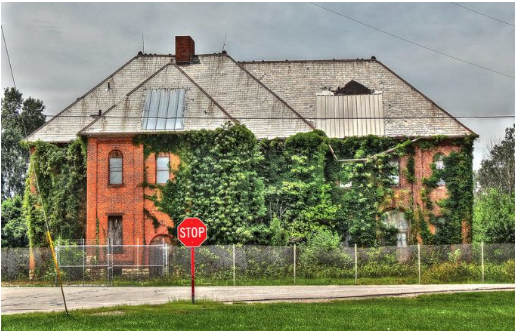CommentsEDUCATION POLITICS - The full-court press* against public education began in earnest during the Reagan administration.
The publication of A Nation At Risk (1983) was like the Boston Massacre of public schooling in the US. There was less blood loss in the march toward privatizing public schools in the US than during the American Revolution, but the intent to destroy yet another public function and institution of government was there. Kill off public school after public school throughout the US and a major source of unionism, and teacher unions in particular, began to wither. Teacher unions were always a reliable base of support for what remained of New Deal liberalism in the US, even though in some large cities like New York City, teacher unions had been purged of leftists during the witch hunts of McCarthyism.
Somehow, as if by magic, public schools were failing kids in the US and A Nation At Risk would be the foundation to attack those schools. What was actually happening behind the curtain in the land of Oz was that the economy had stopped functioning for masses of working class and lower middle-class people who depended on manufacturing jobs and jobs in the public sector. Attacks against teacher unions and public schools were not far behind.
Even a casual observer could see the trends in the demise of jobs, the growth of prisons, the growth of charter schools, and the decline in support for public schooling in the US. In many places, largely in urban areas, public schools were in decline. School buildings in many places were relics of the past and deteriorated along with the general public infrastructure. Drive across any major highway where snow falls in the winter and see the deteriorating bridges: public schooling was like those bridges.
Then came the standardized testing frenzy of the last several decades. That frenzy began in the 1980s and took off, in a largely bipartisan effort, to turn public schools into testing centers. Some schools began doing test preparation with students as a major thrust of their curriculum, with prep sessions carried over into weekend classes where some kids were forced to wear the uniforms required during the regular school week. Many educational initiatives, such as during the Obama administration, rewarded schools with better test results with increased federal funding. It was sort of like the Kentucky Derby of public schooling.
A certain level of testing students is necessary, but not for use in destroying public schools. Charter schools are publicly funded schools that don’t answer to the public like public schools, are operated privately and for profit, and can turn away students that public schools must accept. Standardized test results from charters are often no better, or worse, than their public school counterparts.
A reality at ground level in the equation of what makes for a successful public school involves the education of public school teachers and who works in classrooms across the US. As women entered the professions during the late 1960s and beyond, more young women were drawn away from traditional careers in education and became physicians, lawyers, business executives, entrepreneurs, etc. Schools of education never made the leap, in many cases, in providing a solid liberal arts and/or science education to prospective teachers. Often, courses in education were substandard and did not draw high numbers of competent students.
The growing rightward movement in the political system and in society made hay of all of these trends that affected public schooling in the US. When privatization of schools accelerated with support of the political right and neoliberals, teachers and their unions were less and less able to mount defenses against the juggernaut of the attack on public schools. Outside of a courtroom in Providence, Rhode Island, waiting to testify against then-governor Gina Raimondo’s, now federal Department of Commerce secretary, successful plan to take away cost-of-living adjustments to Rhode Island’s retired public employees, a teacher union leader said that the union he headed did not have the financial resources to mount a successful campaign against Raimondo’s attack, bankrolled, to some extent, by Wall Street interests.
In many ways, teachers, public schools, and teacher unions were like the antiwar movement of the 1960s and early 1970s, fighting rear-guard battles against right-wing and neoliberal interests. Public schools seemed to work pretty well when the economy grew, mostly, following World War II and into the 1950s and 1960s. Now they are the target of the right.
It’s easy in all of this to see the hand of reaction. On many streets in large urban areas, masses of charter school uniforms can be seen worn by school children on any morning, a visual symbol of the successful juggernaut against public schooling in the US. When I recently encountered a journalist who writes for the Boston Globe’s offshoot, Rhode Map, about his consistent support of charter schools in Providence, Rhode Island, and suggested he read one (for example, Diane Ravitch’s The Death and Life of the Great American School System, 2010) of the many scholarly writings about charter schools, he scoffed at my suggestion and related that some alternative had to be championed against largely failing schools in that city. Remember when journalists were supposed to name the names and tell the facts objectively without supporting a questionable alternative to public schools. Again, to a large degree, poverty, not the schools themselves, are at the foundation of failing public schools.
* A defense strategy in basketball when two or more defense players surround the person with the basketball.
(Howard Lisnoff is a freelance writer. He is the author of Against the Wall: Memoir of a Vietnam-Era War Resister (2017).)
















